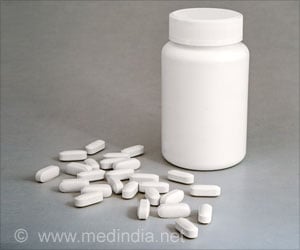Clinicians recommend that any drug should be weighed carefully and explained and be used based on the severity of baseline pain and functional impairment.
The researchers at the American Pain Society (ASP) and the American College of Physicians (ACP) have issued seven new guidelines after thorough analysis of published records.
“There is good evidence that clinicians should not order X-rays or other imaging tests for patients with non-specific low-back pain. They are not helpful and could result in excessive radiation exposure or unnecessary procedures,” said Roger Chou, M.D., co-author of the new guidelines, senior author of both background papers, and associate professor of medicine (general internal medicine and geriatrics) and medical informatics and clinical epidemiology in the OHSU School of Medicine, Oregon Evidence-Based Practice Center at OHSU.The new guideline recommends clinicians weigh carefully potential benefits and risks of any drug and explain that they be used based on the severity of baseline pain and functional impairment.
“Some medications offer some benefits for low-back pain but they have risks. For example, acetaminophen is safe but not that effective, NSAIDs [nonsteroidal anti-inflammatory drugs) like ibuprofen provide more relief but have gastrointestinal and cardiovascular side effects, and opioids can treat severe pain but pose risks for sedation and dependence over time. Physicians and patients should discuss proven options and select the ones that best suit their specific needs,” Chou said.
There are a number of treatments for low-back pain that don’t include medication, such as supervised exercise therapy, chiropractic care and massage therapy. The guideline suggests these options for patients who do not improve with self-care or pain medication.
Members of the panel who issued the guideline represent more than 15 different areas of expertise.
A focused history and physical examination to help place patients with low-back pain into one of three broad categories: non-specific low-back pain, back pain potentially associated with radiculopathy (nerve disorders) or spinal stenosis (narrowing), or back pain associated with another specific cause. The history should include assessment of psychosocial risk factors, which predict risk for chronic disabling back pain,’ they said.
Advertisement
According to the researchers, diagnostic imaging and testing for patients with low-back pain should be performed when severe or progressive neurologic deficits are pre sent or when serious underlying conditions are suspected.
Advertisement
Clinicians should provide patients with low-back pain evidence-based information about their expected course, advise patients to remain active, and provide information about effective self-care options.
As regarding to patients with low-back pain, clinicians should consider the use of medications with proven benefits in conjunction with back care information and self-care. Clinicians should assess the severity of baseline pain and functional deficits, potential benefits, risks, and relative lack of long-term efficacy and safety data before initiating therapy.
For patients who do not improve with self-care options, clinicians should consider the addition of non-pharmacologic therapy with proven benefits for low-back pain. They are spinal manipulation for acute low-back pain; and for chronic or sub-acute low-back pain options include: intensive interdisciplinary rehabilitation, exercise therapy, acupuncture, massage therapy, spinal manipulation, yoga, cognitive-behavioral therapy, or progressive relaxation, they said.
The study is published in the October issue of the Annals of Internal Medicine
Source-ANI
SPH/C





